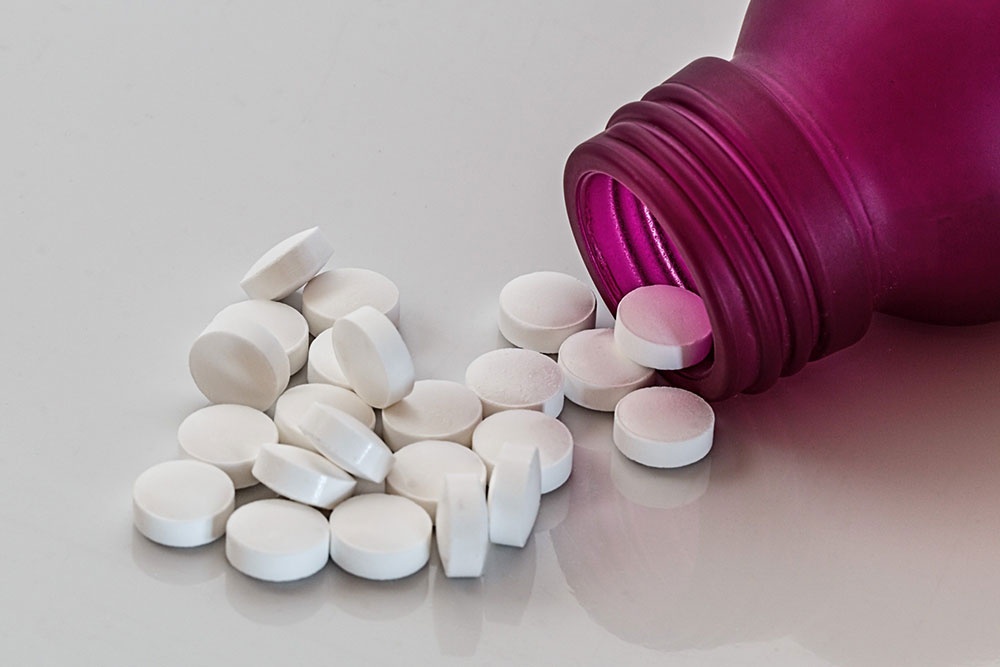Opioid Detox Center in Pasadena, California
Opioids are the perhaps most dangerous drug to be addicted to. Opioid deaths account for the number one spot for drug-related deaths in America. Synthetic opioids are responsible for 82% of opioid-related overdose deaths. Coming off of it is risky to do on your own. This is why, at Path to Recovery offers comprehensive opioid detox in Pasadena, California.
What are Opioids?
Opioids are a family of drugs that interact with opioid receptors in the brain to produce powerful pain relief and euphoria. Examples of opioids include prescription medications such as oxycodone, hydrocodone, codeine, morphine, fentanyl, and hydromorphone. Opioid misuse can lead to addiction and other serious health problems, including overdose and death. Long-term use can also cause physical dependence, in which users have to take larger doses of opioids to get the same effects.
How do Opioids Affect the Brain?
Opioids are drugs that interact with opioid receptors in the brain and body to produce pain relief and pleasure. When taken, opioids can cause an intense rush of euphoria as well as a sense of profound relaxation. These effects happen because opioids act on certain areas of the brain which modulate pain perception, reward, and emotions. However, opioids can also have significant negative impacts on the brain.
Long-term use of opioids can alter the way that nerve cells communicate in the reward, leading to a decrease in pleasure and an increase in tolerance and dependence. This means that more of the drug is needed to achieve the same effects as before. Additionally, using opioids over time can lead to cognitive deficits, such as impaired memory and thinking. Finally, opioid misuse can result in serious health problems including respiratory depression, increased risk for overdose, and even death.

What are Some Commonly Prescribed Opioid Painkillers?
Some of the most commonly prescribed opioid painkillers include oxycodone (OxyContin, Roxicodone), hydrocodone-acetaminophen (Vicodin, Lortab), codeine, and morphine. Oxycodone is an opioid medication used to treat moderate to severe pain. Hydrocodone-acetaminophen is also an opioid medication used to treat moderate to severe pain.
Codeine and morphine are both narcotic medications usually prescribed for severe pain relief. All of these medications work by blocking the transmission of pain signals in the brain, which helps to reduce both physical and emotional discomfort. However, as previously stated, they can be addictive if taken inappropriately or without a doctor’s supervision.
What are Opioid Withdrawal Symptoms?
Opioid withdrawal symptoms can vary from person to person but generally tend to include a combination of physical, cognitive, and emotional symptoms. Physical symptoms of opioid withdrawal are typically the most pronounced and include:
- Nausea
- Vomiting
- Muscle aches and pains
- Headache
- Sweating
- Chills/shivering
- Dilated pupils
- Runny nose or nasal congestion
- Diarrhea
Cognitively, opioid withdrawal is often accompanied by a decreased ability to concentrate or focus and impaired memory.
Emotionally, individuals may experience:
- Intense cravings for opioids
- Strong feelings of depression and anxiety
- Irritability or agitation
- Restlessness or nervousness
- Insomnia
- Mood swings/irritability
- Suicidal thoughts or ideation
Behavioral changes can often be seen as well, such as increased drug-seeking behavior or general withdrawal from social activities. To provide the best possible care for individuals with opioid withdrawal, it is important to understand the full spectrum of symptoms and take a holistic approach to treatment. It’s also important to recognize that each individual may experience different combinations of symptoms and that withdrawal is a highly individualized process.
What Causes Opioid Withdrawal and Dependence?
Opioid withdrawal and dependence occur when the brain and body become accustomed to having opioids present. The brain adjusts its chemical production in response to opioid exposure, causing physical dependence as well as changes in behavior. Opioid use also triggers a reward system in the brain which leads to a craving for more of the drug and leads to psychological dependency.
Other factors that can lead to opioid dependence include genetics, environmental influences, and certain mental health conditions such as depression or anxiety. Long-term use of opioids may also cause tolerance, requiring higher doses for the same effect. This increases the risk of overdose or addiction. Finally, some individuals are more prone to dependency due to their personal and family history of substance abuse.
What is the Opioid Withdrawal Timeline?
Opioid withdrawal is a very uncomfortable process and can vary from person to person. Generally, the opioid withdrawal timeline includes three distinct phases: onset of symptoms, peak of symptoms, and resolution of symptoms.
The onset of withdrawal symptoms typically occurs within 12-30 hours after an individual’s last dose of opioids. During this phase, individuals may experience nausea, vomiting, muscle pain, sweating, and anxiety.
The peak of withdrawal symptoms typically occurs within 48-72 hours after an individual’s last dose of opioids. During this phase, the intensity of withdrawal symptoms may be at its highest, including increased agitation and restlessness as well as more extreme physical symptoms such as increased heart rate and body temperature.
The resolution of withdrawal symptoms typically occurs within 7-10 days after an individual’s last dose of opioids. During this phase, individuals may still experience physical and emotional discomfort, but the intensity of these symptoms should gradually decline. Additionally, individuals may start to experience cravings for opioids and other substances, even after the withdrawal process is complete. Individuals need to find healthy ways to cope with cravings and seek professional treatment if needed.
Can Opioid Withdrawal Cause Death?
Opioid withdrawal can cause significant distress, but it is generally not life-threatening. However, depending on a person’s underlying health condition and the severity, withdrawal symptoms can lead to complications that could be fatal. For example, people with opioid use disorder may become malnourished or dehydrated due to their substance use, which can potentially lead to serious medical complications. Additionally, people with opioid use disorder may be at increased risk of suicide or accidental overdose if they attempt to self-medicate to avoid withdrawal symptoms.
What are some Opioid Withdrawal Medications?
Opioid withdrawal medications are used to help reduce the physical symptoms associated with opioid addiction. Commonly prescribed medications include buprenorphine, methadone, and naltrexone. Buprenorphine is an effective medication that helps relieve cravings and block the effects of opioids such as heroin or prescription painkillers. Methadone and naltrexone work by blocking opioid receptors in the brain, which helps reduce cravings and withdrawal symptoms.
Other medications such as clonidine, or anti-anxiety drugs like benzodiazepines may also be prescribed to help with anxiety or insomnia associated with opioid withdrawal. There are also over-the-counter options such as loperamide (Imodium) and diphenoxylate/atropine (Lomotil) which can help relieve some of the symptoms associated with opioid withdrawal.
What are Some Opioid Detox Options and Withdrawal Treatment?
Medical detox options and withdrawal treatments vary greatly, depending on the individual’s situation. For some individuals, medication-assisted treatment (MAT) is a good option. MAT involves taking medications such as methadone or buprenorphine to reduce opioid cravings while gradually tapering off opioids over time. Other medications and therapies can also be used to reduce the severity of withdrawal symptoms.
Other detoxification and withdrawal treatments include counseling, group therapy, nutritional guidance, and physical activity to help alleviate any withdrawal-related symptoms. In some cases, a physician may recommend inpatient hospitalization for more severe addictions or withdrawals which require closer supervision and medical care.
Get Help NowWhat are some Tips for Coping with Opioid Withdrawal Symptoms?
First and foremost, it is important to stay hydrated throughout the withdrawal process. Drinking plenty of fluids will not only help keep your body hydrated but also flush out toxins from your system. In addition, it is recommended to get plenty of rest during this time as withdrawal symptoms can be exhausting both mentally and physically.
In terms of diet, eating nutrient-dense foods can help replenish lost vitamins and minerals that were depleted by opioid use. It is important to maintain a balanced diet with plenty of fruits, vegetables, whole grains, lean protein, and healthy fats. Focusing on eating fewer processed and sugary foods is also recommended as these can cause blood sugar levels to fluctuate, which can be detrimental during withdrawal.
In addition to diet and hydration, it may be beneficial to distract yourself from the withdrawal symptoms with activities such as reading a book, listening to music, playing video games, or going outside for a walk. Exercise can also help alleviate withdrawal symptoms and increase overall wellbeing. Regular exercise helps improve mood and energy levels, as well as releasing endorphins (feel-good hormones).
Opioid Withdrawal and Co-Occurring Disorders

Opioid withdrawal and co-occurring disorders can present a complex challenge for treatment. People who are dependent on opioid drugs, such as heroin and prescription pain medications, may experience severe withdrawal symptoms when they attempt to stop using the substance.
This can include physical distress, emotional distress, psychological distress, and in some cases even suicidal thoughts or behaviors. Additionally, people who are dependent on opioids may also struggle with co-occurring mental health disorders such as depression or anxiety, which can further complicate the withdrawal process.
The best approach to treating opioid dependency and co-occurring disorders is a comprehensive treatment plan that focuses on both physical and psychological needs. This should include medically supervised detox to help with the withdrawal process, as well as counseling, therapy, and support groups to address any underlying issues that may be contributing to the addiction. Additionally, medication-assisted treatment (MAT) can be used in some cases to help reduce cravings for opioids and manage withdrawal symptoms.
Path to Recovery Offers the Opioid Detox Center that Meets Your Needs

It is pretty challenging to find a rehab that fits your unique needs. This is why Path to Recovery offers the utmost professional care for opioid addiction. You’re not alone in your struggle with opioid addiction. If you or a loved one would like to find out more, you can contact us here.
Call us on 323-996-7773



